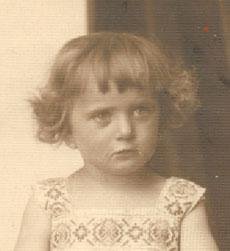Ágnes Bartha
Born: Unknown 1922, Dunaföldvár, Hungary
Ágnes Bartha's father came from a very poor family and as the eldest boy in the family he had been working since the age of nine.
As an adult he opened his own shop in Dunaföldvár, and his successes allowed him to provide high quality education for both his daughters. After her middle school studies, Ágnes started her high school studies at a prestigious institute in Vienna. However, she was forced to interrupt her studies due to the political situation and return to Dunaföldvár where she worked in her father’s store. She was 19 years old when she married a Catholic man, someone she had been in love with for years. Because of anti-Jewish legislation, they needed special permission to enter into a mixed marriage. Her husband’s family, however, refused to accept the Jewish Ágnes and they struggled hard to tear the young couple apart. After a year of being married, they ended up divorcing in 1942.
Ágnes moved to Budapest and started working as a photographer. Her father was deported from Dunaföldvár in May and her mother in June 1944. Ágnes never saw them again. In October 1944, Ágnes and her sister were forced on a death march from Budapest. Her sister managed to escape from the march at Süttő with the help of a 16-year-old young girl. After that, Ágnes befriended painter and sculptor Edit Kiss from Budapest and the two of them supported each other to survive the horrors of the march and deportation. They end up at the concentration camp in Ravensbrück where they were both deemed to be fit enough for slave labor at the Daimler-Benz factory. They were eventually liberated and began their journey back to Hungary together. Upon returning home Ágnes lived in Dunaföldvár for three years before moving back again to Budapest where she continued working as a photographer. By this time, Edith had moved abroad, but the two remained friends until Edith's death.


